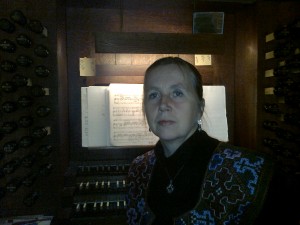Expression of the Archetype of the Self in the New Lithuanian Organ Music
Doctoral student: Jūratė Landsbergytė-Becher
Supervisors: Assoc. Prof. Gediminas Kviklys, Prof. Dr. (hp) Gražina Daunoravičienė
Department: Organ and Harpsichord
Duration: 2010–2014
Abstract
Meaning of the archetype. The study of Lithuanian organ music in the late 20th century reveals its features relating to significant extra-musical factors. These are a strong psycho-social dimension, the aim to shock listeners and affect their consciousness, in order words to elevate music to the critical point of the turning world (paraphrasing S. Th. Eliot: “the still point of the turning world”). This aim relates to archetypes, images of the past and their meaning within the context of the national identity crisis (due to occupation, emigration, ideological shift, etc.). The relevance of the archetype in the modern world was brought forward parallelly and universally by C. G. Jung’s philosophy and psychoanalysis. Here archetypes are construed as images of the collective unconscious, potentially ousted or damaged, living deep in the unconscious, in the pool of memory where they return triggered by the relevant signal and affect the conscious and reality. They shape the self-awareness of nations and fight in a way for their survival and global influence.
The Self. This can also be used as an explanation for the phenomenon of the return of the archetype of Self in Lithuanian organ music. According to Jung and his sources, Indian Upanishads, the Self is the archetype of archetypes with its own dynamics and structure corresponding to the laws of processuality. The structure of the Self is defined by the dramaturgy of the entirety in the form of mandala. Its processuality can be divided into steps or layers, into levels which can also be found in the analysed organ music. These levels of processuality constitute the dramaturgy of the Self which has its own objective of enlightenment, i.e. a sacral dimension. In organ music, the sacral nature relates to the openness to the nature, cosmos or transcendence.
Works. The dramaturgy of the Self developed in all works for organs analysed in this research project reflects these processes. They include Going into Silence by Onutė Narbutaitė (1981), Awakening of the Bright Blossom of the Night after reading Tagore by Algirdas Martinaitis (1974), Evening Meditation by Julius Gaidelis (1966), Prayer by Jonas Tamulionis (2000), Sonata No 3 Borobudur under the architectonic of the Buddhist pyramid by Giedrius Kuprevičius (1978), Ad Patres by Bronius Kutavičius (1984), Domine, Clamavi ad te.. by Gracijus Sakalauskas (1984), Vision by Vidmantas Bartulis (1985). They unfold the universal path towards sanctity described in sources of ancient civilisations (St. Augustin), purpose of pilgrimage and philosophical category of eternal return (Nietzsche) which acquired an existential dimension for the Lithuanian culture during the Soviet occupation. The aim was to recapture the “stolen Self”, which corresponded perfectly with the meaning of a psalm in organ music. Then the psalm and prayer transformed into a universal category of the Self which embraces deep powers of creative work.


